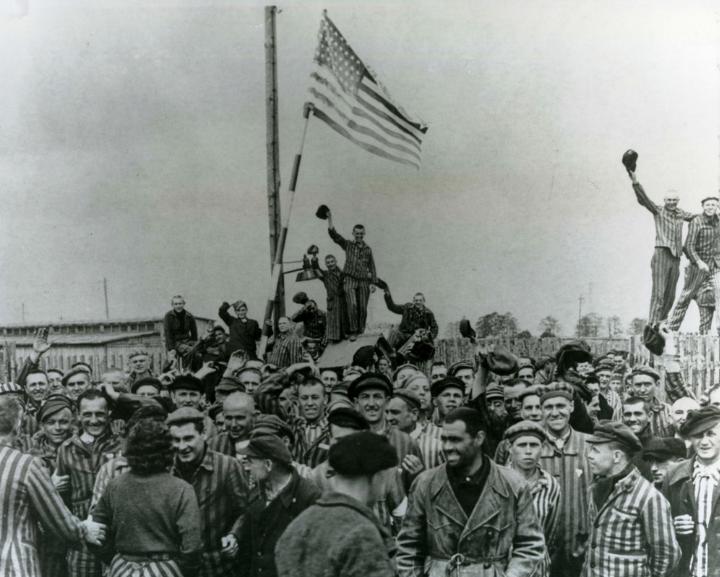29.4. 1945 Liberation of Dachau concentration camp
Categories: Second World War , War crimes , Calendar

More than 200 000 people passed through the camp at Dachau, among them, for example, the writer Josef Čapek. The American army liberated the concentration camp on 29 April 1945. Inside, soldiers found thirty thousand impoverished prisoners.
On Wednesday 22. March 1933, the first and longest-running concentration camp was established overlooking the medieval town of the same name, sixteen kilometres northwest of Munich. The truth is that before the Dachau camp was established, Oranienburg, Lugau and Plauen had been established. However, these were more like temporary disciplinary camps, and the Dachau concentration camp was already established with the intention of being a permanent facility. It was initially set up in an abandoned gunpowder factory.
Twenty flat, semi-dilapidated barracks, an administration building and hundreds of metres of barbed wire must have been enough at first. "The first prisoners slept on concrete floors and even thinning blankets did not protect them from the cold. They had to look around under the supervision of the guards and find some material to make bunk beds. The first concentration camp grew in a somewhat improvised way," Milan Hes explains the creation of the Dachau camp in his book And the Gates Were Opened: Liberation 1945: Dachau - Auschwitz - Terezin.
In the beginning, the violence was to be directed mainly against communists, social democrats and trade unionists, the hated ideological opponents of Nazism who were among the first to go behind the barbed wire. Ironically, the socialists and criminals were always better off. Later, when Jews, Roma and other completely segregated groups were arrested and murdered, they were no longer even "second-class people". "Mercy is the last thing a member of the SS should have," Hes notes.
After March 1939, the Dachau concentration camp became a dangerous place for the Czech population as well. Gradually, 3,600 people were deported to the Bavarian camp, of whom 1,400 perished. For example, the artist and writer Josef Čapek passed through the camp and died in Bergen-Belsen in 1945. The future cardinals Štěpán Trochta and Josef Beran survived. Arnošt Lustig escaped from the death transport bound for Dachau in March 1945.
The camp was liberated by the American army on 29 April 1945, and inside the soldiers found thirty thousand impoverished prisoners. "He (the American) stood in the middle of the room, helpless and clumsy, and could hardly conceal his emotion, much less hold back his tears. And then he resolutely placed his automatic pistol on the table and went to the bedside to embrace each sick man individually. He did this very carefully and slowly, as if he was afraid that he might crush our fragile bodies with his blue arms," Nico Rost, a prisoner from Dachau, told in an entry in diary 29.
Over 200,000 prisoners from thirty countries passed through the Dachau camp. Two-thirds were political prisoners, and one-third were Jews.
The cause of death was disease, malnutrition, but also suicide.
Sources.
The article is included in categories: